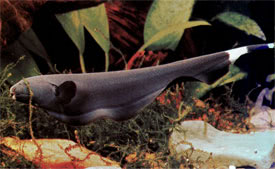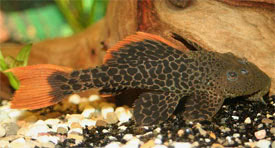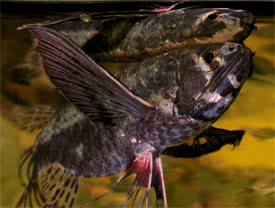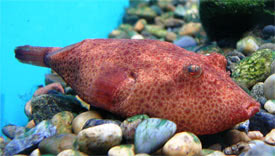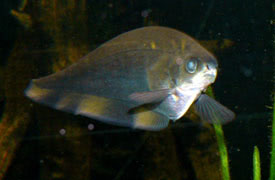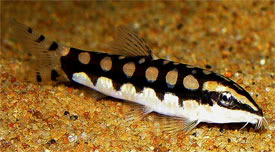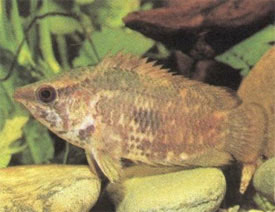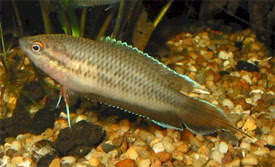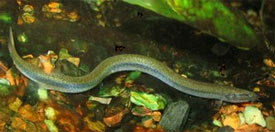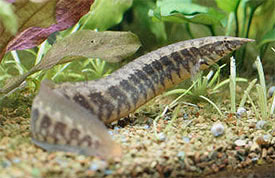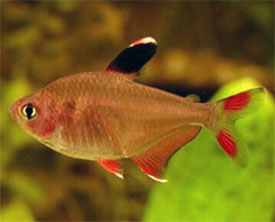
 Magyarul / Hungarian
Magyarul / Hungarian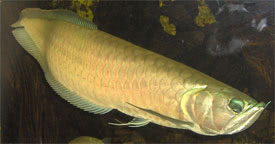

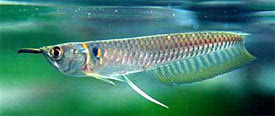

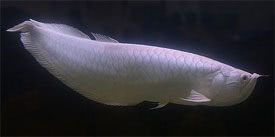
- Scientific name: Osteoglossum bicirrhosum
- Synonyms: Isochnosoma bicirrhosum, Osteoglossum vandelli
- Common name: Silver Arowana, Arowana
- Group: Other fishes
- Habitat: South America; Peru, Brazil, French Guyana
- Size: 150 cm in wild, but rarely exceeds 110 cm in captivity.
- Biotope: Occurs in several rivers, including the Rio Oyapock and Rio Rupununi, near the surface.
- Social behavior: Predators, ready to snap each other, they should be kept only with larger fishes. Arowana is aggressive towards similar species and should be kept alone.
- Diet: Carnivorous; larger specimens eat mostly fishes; otherwise - waterfleas, mosquito larvae. Will occasionally accept flakes and tablets.
- Breeding: Has been bred in aquarium, but it's very rare.
- Tank: Minimum 1000 litres
- Population: 1 fish for 1000 litres
- Decoration: Prefers a tank with a fine gravel bottom, loosely planted with hardy plants. Create large open areas for swimming. They are excellent jumpers and the tank must be covered.
- Temperature: 24-30 °C
- pH: 6-7
- Hardness: 2-15 NK°
- Lifespan: 10-20 years
Description: Silver Arowana has an elongated, slender body with lateral compression. The scales are large and the head is covered with bony plates. The body color ranges, depending on the sex, age, and habitat, but usually it is white with a silvery iridescence. Juvenile fish has two large black spots - one in front of the gill cover, and the other behind the gill cover - that fade with age. The long anal and dorsal fins extend from the midsection of the body and run to the tail. The mouth is large and can be opened widely. Arowana can breath air via their swim bladders. Never should an Arowana be kept in a tank that is narrower and shorter than the length of the fish! The species is also called monkey fish because it of its ability to jump out of the water and capture its prey. It usually swims near the water surface waiting for potential prey.
Mature females are fatter and adult males identifiable by their prognathous jaws and longer anal fins. The fish become large and are too much for most aquarists. Breeding is possible, on most occasions, spawning has occured in a tank exceeding 4000 litres. Spawning is preceded by a simple loveplay. The eggs are very large (1.6 cm in diameter). Male broods them in his mouth and the eggs develop in 50-60 days. The fry leave after the egg sac is gone and are 8-10 cm in length.
In the nature as flood waters rise, the cheek spot of male Arawanas, turns bright pink, which attracts the females as this indicates that the male sperm is ripe. The female produces 15 to 30 eggs, which after fertilization, are taken into the male's mouth. The young hatch and remain in the mouth of the father, until their yolk sac is used up (2-3 weeks). After 4 to 6 weeks, the young are abandoned to fend for themselves. They grow very fast, often more than 30 cm in their first year.



















































